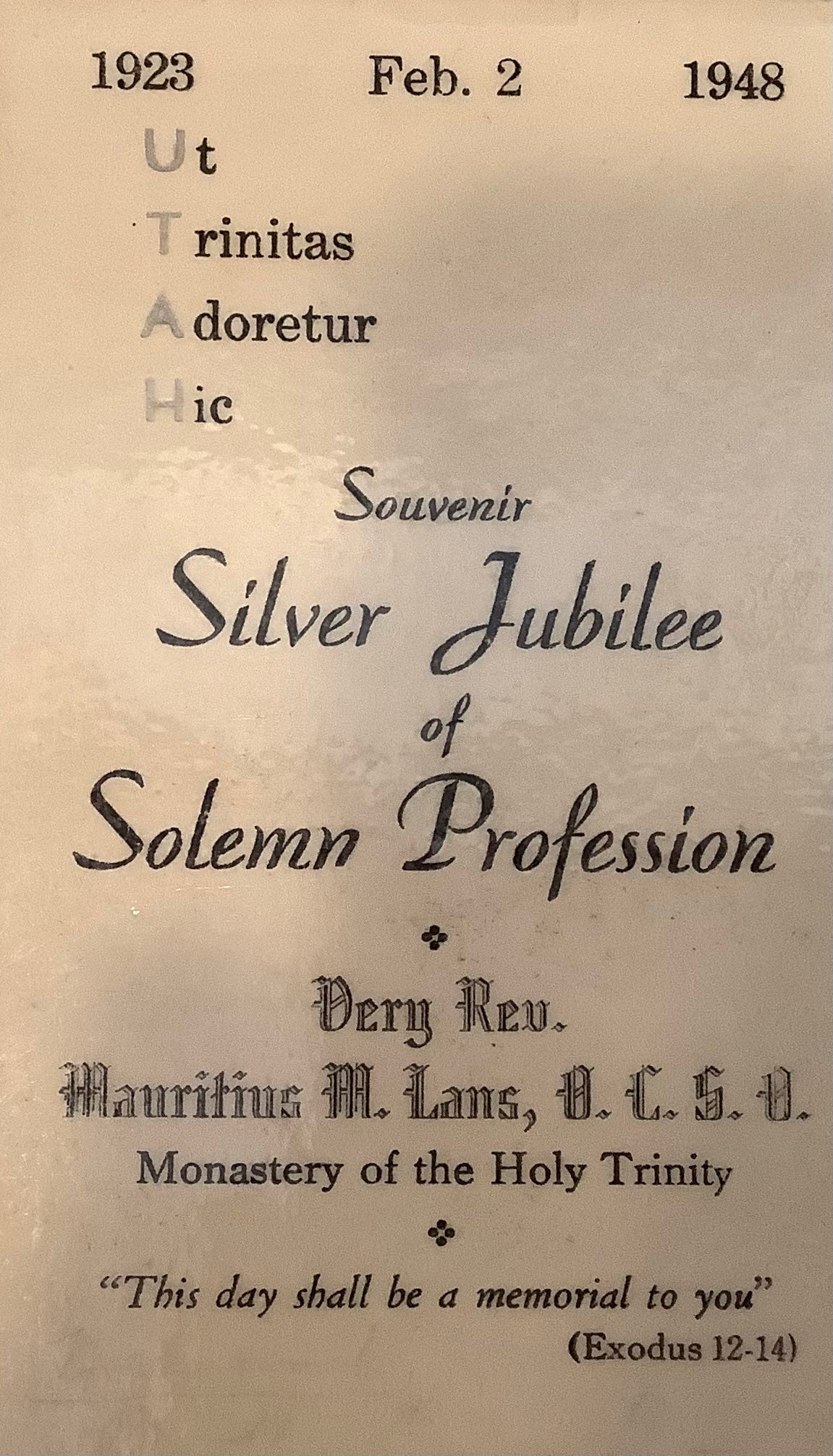I got hooked on used books in graduate school - saved quite a bit of cash on textbooks, but I didn’t stop there. I still buy a lot of books used and of course you find a lot of underlining, highlighting, margin notes, etc., but you also often find little treasures stuck between pages, like receipts, sticky-notes, envelopes, even prayer cards. It’s where I found the card above celebrating the Silver Jubilee of Solemn Profession of Trappist monk Mauritius Lans, OCSO in 1948.
Fr. Lans was then a monk of the Monastery of the Holy Trinity in Huntsville, Utah. Notice the “UTAH” in the Latin Ut Trintas Adoretur Hic.1 Finding the card piqued my curiosity and led me to research Lans and the monastery.
Holy Trinity was founded in 1947 and sadly closed in 2017 when only six elderly monks remained. No new vocations had come and stayed since 1987. Like many monasteries, its population peaked (at 84) after World War II as many veterans discerned vocations to the religious life.
Efforts continue to be made, through the Ogden Valley Land Trust, to preserve the 1,050-acre property from development and to maintain its use as consistent with its history as possible.
The monastery that once flourished in Utah’s Ogden Valley may be gone — the building razed and the surviving monks living out their days in a Salt Lake City senior center — but its spirit remains rooted in ground where the prayerful priests carved out an agricultural stronghold. - Salt Lake Tribune, April 25, 2021
I discovered - and recommend - a touching and informative five-minute video of its history and closure, “To Close a Monastery,” produced by the Ogden Valley Land Trust. You can view it here.
The website for the land trust is here.
As for Father Mauritius … Born in Holland in 1887, he came to the United States at age 21. He worked as a landscaper in Southern California before he became a monk at Kentucky’s Gethsemani Abbey, where he was ordained as a priest in 1925. Along with Gethsemani Abbot Frederic Dunne, he led the pioneer monks to Utah in 1947.
A travel journal of one of the monks indicates that Father Maurice (as he was popularly known) stayed up for all of one night during the long train trip west “looking out the window, and enjoying the beautiful moonlight reflected in the rivers and streams.” He served as the first abbot of the Utah monastery.
A story goes that soon after the monks arrived in Utah, a large crowd visited the abbey during an open house picnic. A monk’s journal reports: “Rev. Father Mauritius went out to greet them. He said that they were just bubbling over with joy and enthusiasm because we were here. Two ladies came up to Rev. Father and before he knew what they wanted they took him one by each arm and said, ‘Look up!’ Someone took their picture. Rev. Father, wiping his brow, moaned, ‘If that ever gets published!’”2
Thomas Merton, the Trappist author, wrote a vivid description of the Utah monastery inWaters of Siloe: “The monks have settled in a wild, lonely spot. To the east of them is nothing but a wilderness without roads or farms. It is a paradise for hunters who, in the past, made the monks’ ranch their base, and worked eastward from there. Deer come down to drink at one of the two plentiful springs on the Trappists’ ranch, and about the only sound you hear in the valley is the howling of coyotes on the mountain side. At least, that was all you heard until the Cistercians set up their bell and began to ring it for Office and Mass.”
Alas, the bell rings no more, but hopefully the property will survive in a way the Trappists are hoping for.
Fr. Mauritius died an untimely and early death in 1955, aged 68.
“That the Trinity may be worshipped here”
Adapted excerpts from Monastery Mornings (Paraclete Press 2021) by Michael Patrick O’Brien.




